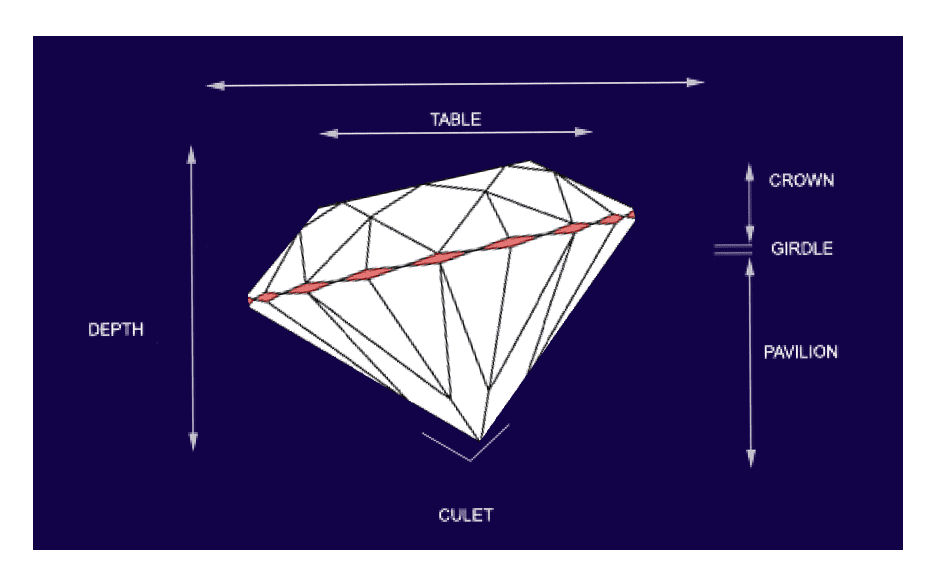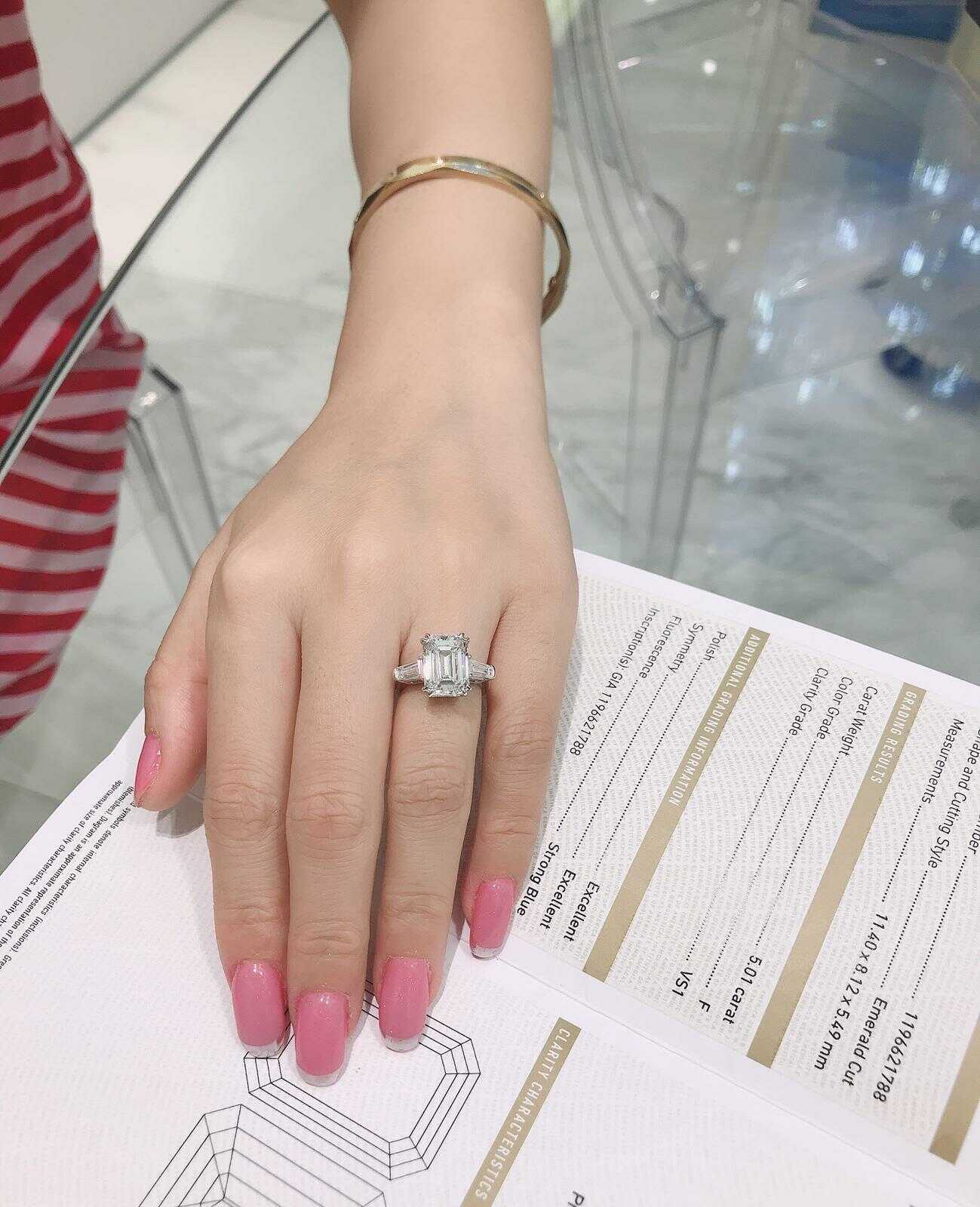As we all know, the most important price-determining factor of diamonds is their cut. And to estimate the cut quality, the first thing specialists consider is the diamond proportions.
For an inexperienced diamond buyer, diamond proportions are just a jumble of numbers and technical terms. But knowing how to read them gives you a superpower: you can spot the presence and intensity of sparkle in diamonds. In other words, the diamond proportion values help you validate your stone has an excellent cut.
Besides, you’ll never be misguided by the jewelry consultants. By understanding diamond proportions, you'll know for sure they're selling you a bad stone but claiming it has an ideal cut, shape, or carat weight. You’ll be able to make your own judgment about the diamond price.
All these advantages make figuring out what diamond proportions mean worth it, isn’t it? If so, let’s figure out how to use them for your benefit!
First, let’s make an abstract term down-to-earth and straightforward. Simply put, diamond proportions are various samples of length and angles in diamonds. These measurements are not random, though. They define the diameter of diamonds, along with the depth and width of their specific parts — like table size and crown’s and pavilion’s height and angle.
These multiple samples of length and ratios determine the geometry and anatomy of diamonds. If your stone has an exemplary set of length, width, and depth proportions for its shape and carat number, it has a perfect cut and outstanding beauty. Moreover, diamond proportions influence the ability of a jewel to reflect the light directly. That’s because perfect length ratios and angles create the hypnotic move of light in a stone, be that white and colored light or alternating flashes.
That’s how diamond proportions affect fire, brilliance, and scintillation and become the core parameters that define the cut quality and the diamond cost.
To get the particular diamond proportion indicators, you need to perform calculations. Precisely, you should get the percentage of table size, pavilion depth, and crown height in relation to the overall length (or diameter) of a diamond.
By the way, the diamond diameter appears in each diamond proportion ratio. It’s so important because the stones differ in shape and carat weight. And so, the relation to the size makes the calculated values more accurate.
The slightest change in any of diamond proportions completely ruins the precious stone's fragile beauty. That’s because the cut quality refers to the ability to let the light pass through the diamond surface and get back in front of the viewer’s eye. And so, any change in its interplay stops the process of light reflection and “switches off” the jewel, making it dull and faded.

Here are the exact formulas for the most important diamond proportions.
To get the table size meaning, divide the table width (it’s the top face up area or the largest facet of a jewel) by the overall diamond diameter (or the widest width of a diamond that has a fancy shape).
For example, lengths of 2mm and 4mm respectively mean the table size is 50%. This meaning is too low: the light is lost inside a diamond and reflects back randomly through the sides, not reaching back the table. And so, the cut is poor even if the parameters of width and depth are OK.
If you have 2mm of table width and the diamond diameter is 3mm, the table meaning is 66%. That’s already too high. Such a stone doesn’t reflect the light at all and has low cut quality, no matter how good width and depth are.
The diamond width is the length of a diamond from one girdle to another. For round diamonds, the width is the diameter. As you already know, this diamond parameter is used to calculate all the cut-related ratios in a stone. For other diamond shapes, width is used as a part of the length to width (L/W) ratio. Primarily, it indicates how proportionate a diamond shape is. To get its meaning, you should divide the overall length of a diamond by its width.
Here are the recommended values for length to width proportion for each diamond shape.
| Oval | 1.5 |
| Pear | 1.6 |
| Marquise | 1.9-2 |
| Heart | 1-1.1 |
| Cushion | 1.3 |
| Radiant | 1.4 |
| Princess | 1-1.02 |
| Emerald | 1.5 |
| Asscher | 1-1.02 |
The diamond depth ratio is calculated by dividing the height by the diamond's width. In this context, the height is the jewel’s length from the top to the culet at its base.
If a diamond’s height is 2mm and the width is 4mm, its depth is 50%. Such a diamond is too short and wide and has a shallow cut. In terms of sparkle, you’ll witness the light pass through the diamond without leaving a trace. And poor sparkling and brilliance abilities mean poor cut quality.
If the height is 2mm and the width is 3mm, the diamond’s depth is 66%. That’s the indicator of a too deep diamond that makes the light disappear through its thin bottom. In terms of cut, such an appearance is too high to contribute to an exemplar stone.
In the end, knowing the above-mentioned parameters helps to understand whether the diamond you’ve picked has an ideal cut or not. In this table, we’ve shown the exact diamond proportions for the stones of a round cut.
Feel free to use it as your wallet card in the jewelry shop.
| Table | 54-57% |
| Crown Angle | 34-35% |
| Pavilion Angle | 40.6-41% |
| Depth | 60-62.5% |
| Girdle Thickness | Thin to Medium |
| Culet | None |
Historically, Marcel Tolkowsky first came with the idea of desired diamond proportions in 1919. His ideal cut parameters, defined in the fundamental work “Diamond Design, A Study of the Reflection and Refraction of Light in a Diamond,” are similar to the contemporary standards. Among other parameters, Tolkowsky Ideal Cut has 53% table size and 59.3% depth.
These days, grading laboratories are not that strict with diamond proportion numbers, giving a relatively wide range of values for the ideal cut. For example, the perfect diamond depth for the round brilliant cut ranges from 59% to 62.6%, which gives a diamond cutter more freedom than a strict 59.3% depth threshold. Nevertheless, this depth is still not easy to achieve, and a stone still looks exemplary.
In a diamond, proportions are as important as clarity and color. Nevertheless, they seem too complex, and people do not always check them with due cognizance.
Among the specific factors that make a given diamond proportion set more attractive than another, we recommend paying attention to the shape and the diamond certification presence.
The diamond shape is the most important factor that affects the meaning of diamond proportions. That’s because each diamond shape creates a different diamond appearance. And the impact of this factor is so huge that it changes the meaning of diamond proportion ratios.
Important note: don’t mistake the shape, carat, and diamond size. These parameters are very different:The meaning of the ideal cut is different for each shape. The table with diamond proportions we’ve given above is designed for the round cut. For other shapes, the proper light dispersion depends on the depth, table size, and L/W ratios are presented in the table below.
| Shape type | Table size | Depth percentage | L/W ratio |
| Oval | 56-60% | 60-63% | 1.5 |
| Pear | 56-60% | 60-63% | 1.6 |
| Marquise | 56-60% | 60-63% | 1.9-2 |
| Heart | 56-60% | 56-59% | 1-1.1 |
| Cushion | 59-63% | 67-70% | 1.3 |
| Radiant | 64-68% | 67-70% | 1.4 |
| Princess | 68-72% | 71-75% | 1-1.02 |
| Emerald | 61-65% | 66-69% | 1.5 |
| Asscher | 61-65% | 66-69% | 1-1.02 |
The diamond certificate is the most important document. It validates all the proportions in a diamond, mentions other technical characteristics of a diamond, and provides an overall cut quality estimation. The main grading institute that issues reports for diamonds is GIA, the Gemological Institute of America.
In the report from this laboratory, you can get the profile of actual diamond proportions based on 10 key parameters:On the right side of the report, you can see the description of the grading scales of the 4C’s of a diamond. They are the key characteristics that determine quality. On the left, GIA mentions the exact grades for carat weight, color, clarity, and cut.

If you’re interested in getting a top-quality diamond, contact the consultant from Diamond Registry! Since 1961, we have been working hard to connect diamond buyers with wholesalers all over the world. These days, we’re capable of finding jewels of Excellent cut in any carat category. Fill our “Get Free Quote” form, and we’ll help you meet the diamond of your dreams!

